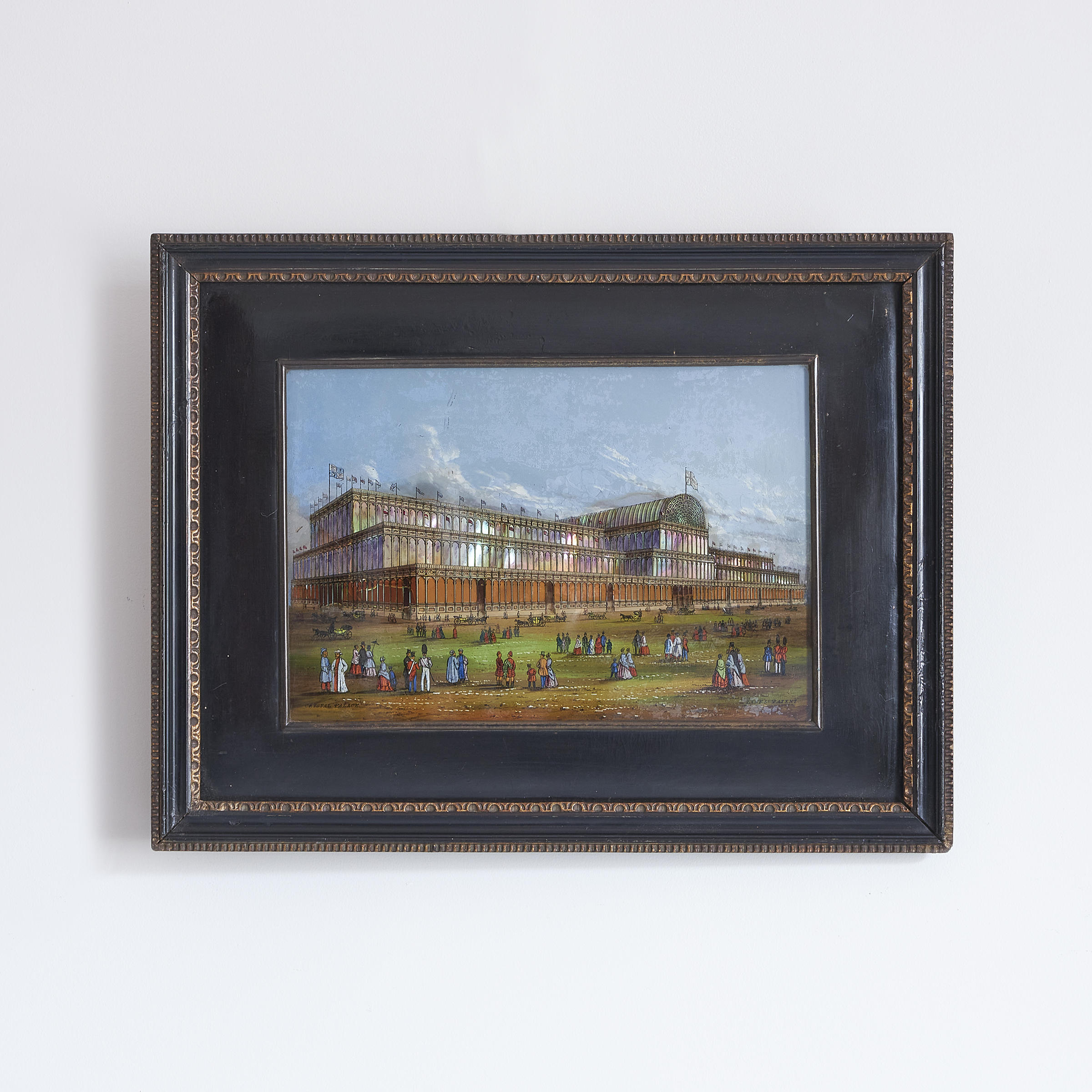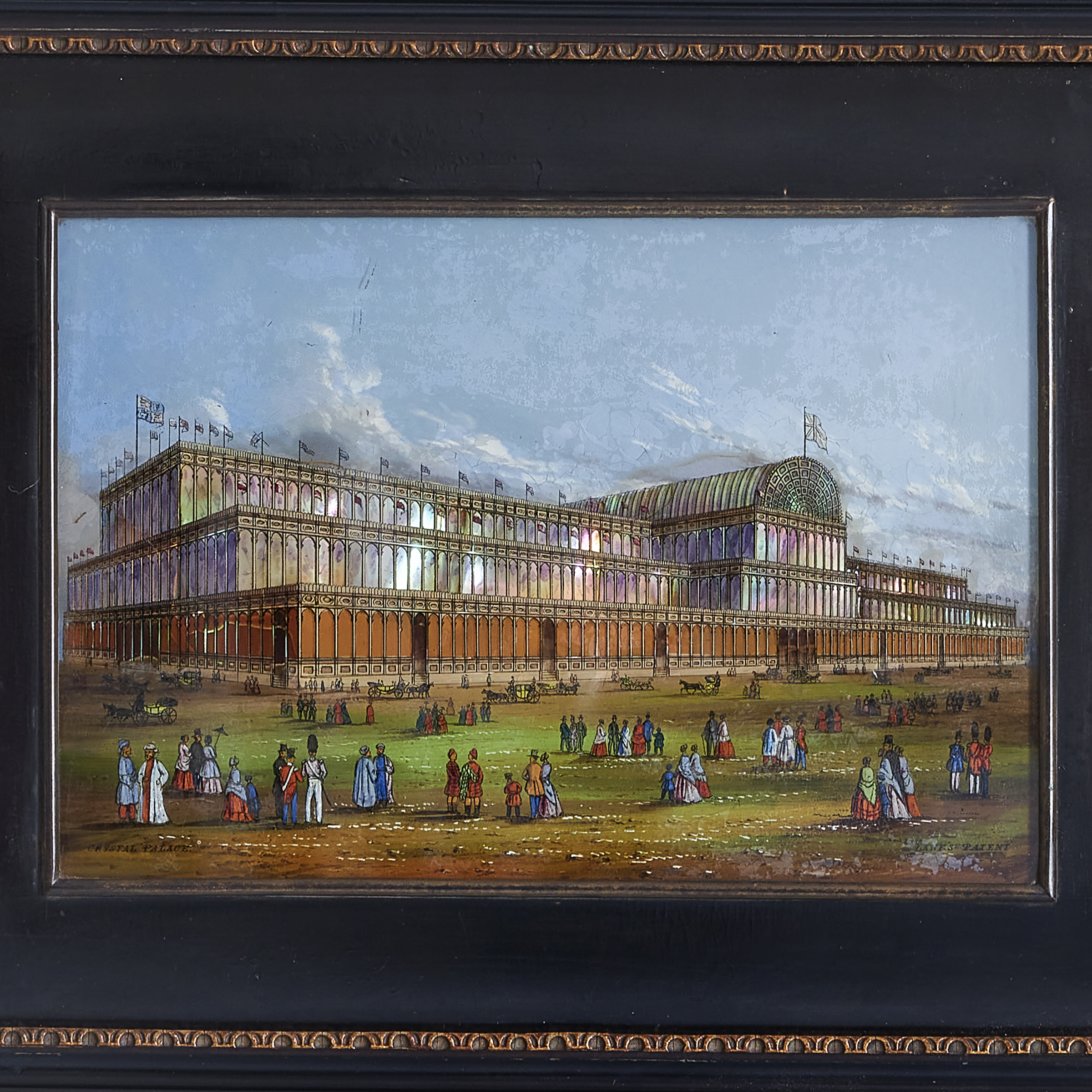More about this product
Titled to the lower left, ‘CRYSTAL PALACE’ and the lower right, ‘LANE’S PATENT’.
The Crystal Palace was a true architectural and engineering phenomenon of Victorian Britain in 1851. Designed to house the Great Exhibition, a showcase for primarily British innovation and artistry to the world, it was originally built in Hyde Park, but incredibly relocated the following year to Sydenham, South London, and rebuilt to a slightly larger design. It was remarkably constructed from 400 tons of thinly fabricated plate glass, cast iron and wood to a modular design by Joseph Paxton. Tragically, in 1936 the palace was destroyed by fire, the glass ironically reduced to a molten mass.
This reverse glass representation of Crystal Palace not only retains a wonderful colour and the impression of the moving sky, but also the use of abalone from the mother-of-pearl shell is carefully used to pick out the shimmering effects of the glass. It must have been quite a spectacular sight to 19th Century eyes and one that generated associated memorabilia, sold in special souvenir shops. These pieces are relatively rare today, many depictions were mounted in papier-mâché as useful desk items, as this one possibly was. A similar example, by Jennens & Bettridge, which retains its papier-mâché mounts, is held by the Victoria and Albert Museum, No.CIRC.1801-1969.



